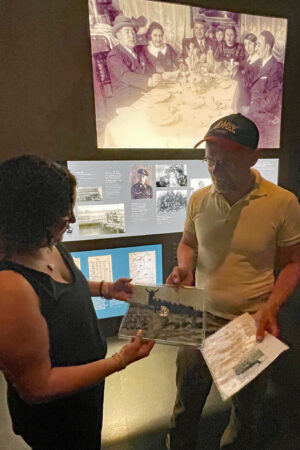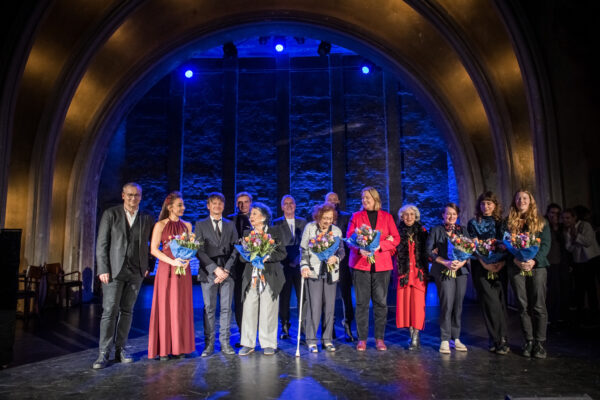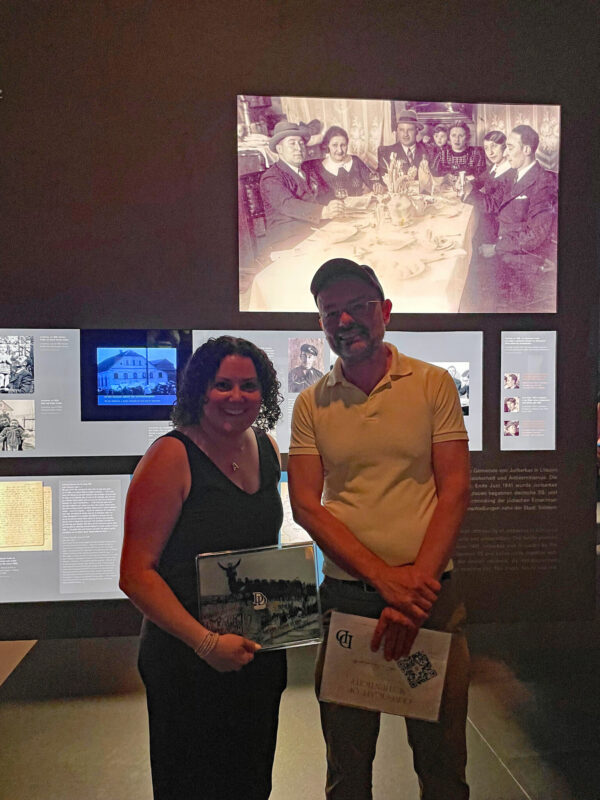A great-granddaughter from the Jewish Krelitz family visited the Place of Information on June 18, 2025.
Alexis Sherman is listened to attentively: In the Family Room at the Place of Information, it is quiet as she talks about her great-grandmother Lea. Alexis is a young American and is staying in Berlin for ten days with other transatlantic travelers. They are participating in the program Germany Close Up, co-financed by the Marshall Fund, which in Alexis’s group’s case is organized by the American Jewish Committee and Allianz Insurance.
Alexis lives in the USA today, but the story she tells spans from Lithuania to Mexico. The Krelitz family, from which she descends, belonged to the Jewish community in Jurburg, Lithuanian: Jurbarkas. With over 1,300 members, this accounted for almost 30 percent of the town’s population. The shtetl on the Memel River was located not far from the then border between German East Prussia and Lithuania and, like the rest of Lithuania, had been occupied by the Soviets since 1940.
Already in 1927, a daughter of the Krelitz family, Rivka, had left her European homeland and emigrated to Mexico. Her sister Lea visited her ten years later. Alexis reports that her great-grandmother actually did not want to stay in Mexico but was warned by relatives from Jurburg. The increasingly aggressive Nazis in neighboring Germany were perceived as a threat to Lithuanian Jews as well. The letters that her brother Mosche wrote and that remained in Mexico (Alexis reads English translations aloud) speak a clear language. Lea remained in Mexico.
With the Wehrmacht’s invasion of the Soviet Union at the end of June 1941, German troops advanced into Jurbarkas. The leader of SS Einsatzgruppe A, Stahlecker, ordered the murder of Jews and communists in a 25-kilometer-wide border strip to the German Reich. In Jurbarkas, SS and police units shot 317 men and five women on July 3. At least four more mass shootings by the SS and Lithuanian auxiliary forces followed. The exact time of the Krelitz family’s murder can no longer be determined. By the end of September 1941, no Jews were left in Jurbarkas.
Lea’s son Max Sherman (Alexis’s grandfather) later transferred the letters from Lithuania to the archive of the Israeli memorial Yad Vashem. He also connected with a distant relative in the USA, Joel Alpert, who had put family materials online in the 1990s, very early in the development of the internet. In this way, the Foundation Memorial also became aware of the Krelitz family history. Joel Alpert and the Sherman family were present at the opening of the Holocaust Memorial in May 2005.
Thus, the circle closes to the Place of Information and Alexis Sherman’s visit. Following her report, Alexis presented a work of art she had commissioned: a picture of the Berlin Wall, on which the artist had drawn family photos of the Krelitz family as virtual graffiti. An artistic bridge of a very different kind to the history of Berlin.








